I spent more than an hour to find examples of teens talking about teen related topics. I think teenagers are like any other groups that share their opinions and feelings with other people in the internet.
I found videos about bullying interesting. In one of the videos a teenager was talking about his cousin and how he was bullied. In the second video a group of high school students created a series of skits and sketches to prevent bullying in their school. This project was very creative and showed their sensitivity for bullying.
Bullying is a serious problem in our schools. As we discussed "Adolescent Masculinity, Homophobia and Violence" in class, the understanding of masculinity in the dominant white middle class culture is an important factor in bullying. Also as we saw in the TV series Glee, most of the times adults, such as teachers and administrators do not do anything to prevent bullying. Nevertheless, the videos I share here shows that teenagers are concerned about bullying and how it affects their friends and relatives.
Monday, April 29, 2013
Sunday, April 14, 2013
Glee
I watch Glee when I have time. For
this assignment I watched the three episodes, “Pilot”, “Never Been Kissed”, and
“Furt”. The first assumption of this class is “media matters”. I think teachers
and parents must pay attention to what children and teenagers are watching on
T.V. Glee like many TV programs for teenagers gives certain messages. In these
three episodes we can see that the television series Glee want to include
characters who are from different racial / ethnic backgrounds, physically handicapped,
and people with Down’s syndrome, gay and lesbian people. Since we live in a
diverse society T.V. series must reflect that. Teenagers who watch Glee would
learn about these experiences.
The second assumption of the course
is “youth is a culturally constructed category.”
In all three episodes of the Glee
we can see what is expected from adults, teachers, parents, and teenagers in
middle class American culture. For example in the Pilot episode Will Schuester
almost changed his career that he liked very much to make more money for his
family. However, one of his colleagues convinced him that he should continue
teaching, because he has a passion for it. Also in the episode “Furt” the girl
members of the Glee club asked their boyfriends to stand up for Kurt. If a
friend is bullied that it is not acceptable, the viewers will understand that
message.
The third assumption of the course
is “teenagers are not some alien life form.” The TV series Glee shows that
teenagers are living in the same society with adults. Their thinking and
behaviors are affected by adults. For example in all episodes, Kurt was
bullied, however the adults in the school did not or could not do anything,
especially the administration and he transferred to another school. As we read
in our class about bullying and masculinity these are serious issues in our
culture.
What can adults do to stop bullying? 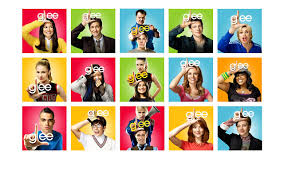


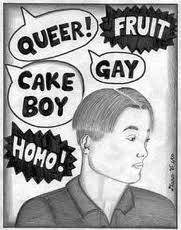


Monday, April 8, 2013
Sunday, April 7, 2013
Argument Hip Hop
The author Tricia Rose argues that both defenders and "haters" of Hip-Hop are wrong about the role and effects of Hip Hop. In her TED talk Rose explains the historical and cultural environment that Hip Hop was born into in the mid 1970's. According to her, urban areas were left by white people. Africa Americans couldn't find employment and had to live in very impoverished places. This created a new kind of segregation and Hip Hop was born in that environment. Hip-Hop was affected by African-American culture which is mostly based on "communication" and "conversation" modes. Racism in North America affected people's lives and culture. Their experience was not studied and because of this we don't know munch about the causes of violence and other negative experiences.
Also the new technologies in recording and music gave new tools to the artists to use other people's songs and music and combine them with their own responses. They were able to use pre-recorded music and taking sections from them for a new song. Because of this Hip-Hop comes from African American culture and must be studied and its development must be supported.
Rose criticizes the defenders of hip-hop, because according to her "they are wrong about gender and sexism." On the other hand "haters" are wrong about issues of violence and culture. The author proposes that Hip-Hop can stop giving sexist messages, instead it can focus on other aspects of African American experience. Understanding each others experience must be our goal. Also "haters" of Hip-Hop should realize that violence is the result of destabilized community lives and Hip -Hop does not create the violence. If we want to stop violence, we must understand the racism and economic and social conditions that causes destabilization of communities. This will also help to decrease sexism and other negative influences in the culture.





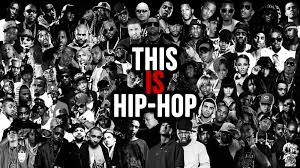
Also the new technologies in recording and music gave new tools to the artists to use other people's songs and music and combine them with their own responses. They were able to use pre-recorded music and taking sections from them for a new song. Because of this Hip-Hop comes from African American culture and must be studied and its development must be supported.
Rose criticizes the defenders of hip-hop, because according to her "they are wrong about gender and sexism." On the other hand "haters" are wrong about issues of violence and culture. The author proposes that Hip-Hop can stop giving sexist messages, instead it can focus on other aspects of African American experience. Understanding each others experience must be our goal. Also "haters" of Hip-Hop should realize that violence is the result of destabilized community lives and Hip -Hop does not create the violence. If we want to stop violence, we must understand the racism and economic and social conditions that causes destabilization of communities. This will also help to decrease sexism and other negative influences in the culture.
Monday, April 1, 2013
Sunday, March 31, 2013
Adolescent Masculinity Homophobia and Violence
QUOTES
I chose three quotes to analyze
from the article. The first quote is related to the author’s analysis of media
reports on random school shootings from 1982 to 2001. “We found a striking
pattern from the stories about the boys who committed the violence: Nearly all
had stories of being constantly bullied, beat up, and most significantly for
this analysis, “ gay baited.” Their stories of cultural marginalization “based
on criteria for adequate gender performance, specifically the enactment of
codes of masculinity.” I think that this analysis shows how culture affects
people’s behavior. In this article the authors hypothesized that boys who were
involved in school shootings were influenced by white middle class republican
values which focus on masculinity and protecting one’s masculine
characteristics. This is why teenagers who bully others humiliate them about
gender and sexuality related issues. In turn boys who feel insulted want revenge
and choose violence to teach them a lesson and prove that they are “men”.
The authors also focus on why white boys are more likely than African
American boys to randomly open fire. My second quote from the article is “White
boys who are bullied are supposed to be able to embody independence, and manly
stoicism. In fact, the very search for such collective rectories can be seen as
indication of weakness. Thus we might hypothesize that the cultured
marginalization of the boys who did commit school shootings extended to feeling
that they had no other recourse.” White boys who were bullied did not have the
familial or friend support to resist to bullying and also they do not have a
group like women, gays and lesbians, black students and their support.
My last quote from the article
is about why some boys turn to violence over bullying and “not others who have
had similar experiences.” Important factors are the dynamics of local culture,
the responsive of adults and institutions, and the dynamics of their same-sex
and cross-sex friendships. This allows us to understand what led some boys to
commit these terrible acts and what enabled other boys to develop resistance to
daily homophobic bullying. According to the article some boys can represent
themselves as men to a same sex or opposite sex friend. Also they might get support
from their families and school authorities. These variables and other copying
strategies must further research to help us understand how gender and violence
are related. 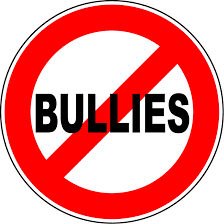
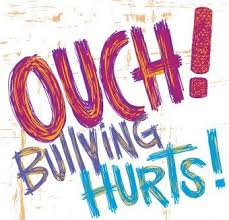

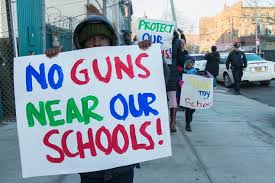


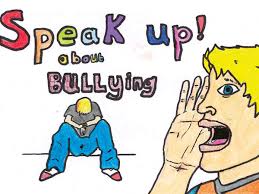
Tuesday, March 26, 2013
'Thigh Gap': New Teen Body Obsession?
A new body trend is apparently becoming an obsession among teenage girls.
It's the thigh gap - a clear space, or gap, that can be seen between the thighs when a girl is standing with her knees together. Some runway models have it, and teen girls want it.
"Good Morning America" sat down with four high school juniors from a New Jersey Chapter of Students Against Destructive Decisions to discuss this latest trend.
The four girls told ABC News' Juju Chang that they all had friends that were intent on achieving the thigh gap.
RELATED: Victoria's Secret Fashion Show: Models Rock Lingerie on the Runway Emily Rozansky told Chang that, for many teens, the thigh gap symbolized "the ideal body shape."
Social media sites such as Tumblr, Facebook and Twitter have devotees who flood the zone with images of thigh gaps, bony collarbones and confidence-crushing messages disguised as "inspiration" for staying thin.
Some of the most popular pictures showcase very thin girls with protruding hip bones and a thigh gap.
The teens told Chang that the sites make them feel they have to conform.
Angela DePalma, 16, said: "I see those pictures on Tumblr and stuff and I think that wow, like, they look so good. And then I realize how unhealthy that is."
Tumblr says it discourages blogs that actively promote or glorify self-harm.
According to teen psychologist Barbara Greenberg, statistics show that 80 percent of girls dislike their bodies by the time they are 17 years old. That, combined with a tendency to overshare, makes teen girls vulnerable to even the most subtle messages.
MORE: Victoria's Secret Models Share Secrets Behind Their Toned Bodies
A quick online search brings up page after page of thigh gap inspiration photos and supporters. Experts say the images alone can lead to self-destructive behavior, especially since the thigh gap is, for most girls, an unrealistic standard of beauty.
Greenberg said teens who were pursuing a thigh gap were "setting themselves up for not only an unattainable goal but for an unsustainable goal.
"Even if they reach it, it's going to be very hard for them to maintain it," she said.
MORE: Women Seek Plastic Surgery to Get Kate Middleton's Nose
Surprisingly, some girls' motivation to have a thigh gap isn't to make themselves more desirable to boys. The New Jersey students told Chang that some boys don't even notice it.
It's strictly a girl thing, affecting popularity and status, they said.
Also Read
Sunday, March 24, 2013
Cinderella ate my child and brave
Disney princesses are a big part of
culture because we see it everywhere. I am a girl and I get called a princess
at home. I love princess movies and stories. When I was younger I liked to
watch the old and new princess movies and read books written for YA fans about
princesses. The writer talks about how she doesn’t want her own daughter Daisy
to believe that a prince would come and make her very happy. Parents call their girls princess and buy them
princess toys or let them watch princess tales, not knowing that this can
change their girls’ minds about how they must feel and look. The teacher does
the same thing too by telling the girls how nice they are or how neat their
homework is but complimenting boys on being hardworking and good problem solvers.
What we expect from girls affect their development and behavior. If we think
that they can be anything they want to be and support them for doing this they
wouldn’t focus on irrelevant things like being thin and pretty and having a
boyfriend. Instead they would understand that developing their potential is
very important and they would focus on both academic and other activities. When
they realize that they can achieve their goals like supporting themselves or
their families and having a meaningful life they can show that they can do many
things. But if we don’t do this and we ask girls to be submissive and depend on
men and expect them to focus on being perfect and pleasing everybody they can’t
fully develop and they always need other peoples or men’s support in life. What
should we do about it? We should be very careful about how we talk and interact
with children. We should encourage them to read and to play sports and be
active in their community by helping other people. This will help them to
participate in school and society in a meaningful way. In the movie Brave Merida is not a typical
princess. She has goals and she can
achieve anything that she puts her mind to.
I think that we should have more movies like Brave for girls and boys. 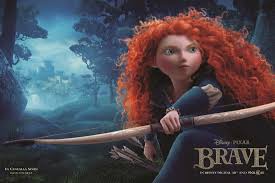
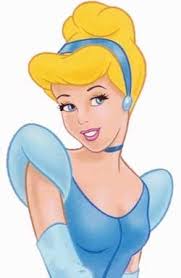


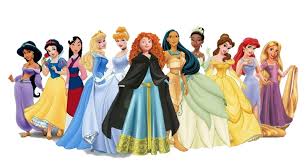




Monday, March 18, 2013
what i think i am going to do for the final
I think I am going to something with young adult books or young adult tv shows. I know parents don't really want there teens reading some of the YA books or watching some of the young adult tv shows. I will ask the question why don't parents let there teens read or watch tv shows that are for young adult. I want to work by myself then in a group.
Tuesday, March 12, 2013
outline
I am going to media matters in the group.
Media Matters - Outline
Media Matters - Outline
Media provides models of appropriate behavior and attitudes.
For example, media defines appropriate roles of men and women, parents and
children, and defines what is success or criminal activity.
Media determines what we think and what we believe. The
accumulation of media images suggests what is ‘normal’ and what is ‘deviant.’
Media normalizes specific social relations and determines the
range of acceptable behaviors.
According to the Marxist theory, ruling class imposes their worldview
on subordinated classes. Therefore subordinated classes who accept the
worldview of ruling classes have false consciousness, because the worldview
they adopt represents the interests of ruling classes.
According to Gramsci, hegemony is exercised through cultural
leadership and consent is won. Ruling classes seek to have their worldview
accepted by all members of society as the universal way of thinking. Media helps
the powerful classes exercise their cultural leadership.
Ruling classes dominates all institutions in society
including media forces. They use media tools such as TV, newspapers and
internet to impose their beliefs on society which represents their
interests.
However, it does not mean that media as a powerful tool is
always used by the powerful classes. Media has also power to provide power to
powerless classes. Media should not be seen only as an agent of powerful.
up.
Sunday, March 3, 2013
I am doing Media Matters in the group.
Media Matters - Outline
Media provides models of appropriate behavior and attitudes.
For example, media defines appropriate roles of men and women, parents and
children, and defines what is success or criminal activity.
Media determines what we think and what we believe. The
accumulation of media images suggests what is ‘normal’ and what is ‘deviant.’
Media normalizes specific social relations and determines the
range of acceptable behaviors.
According to the Marxist theory, ruling class imposes their worldview
on subordinated classes. Therefore subordinated classes who accept the
worldview of ruling classes have false consciousness, because the worldview
they adopt represents the interests of ruling classes.
According to Gramsci, hegemony is exercised through cultural
leadership and consent is won. Ruling classes seek to have their worldview
accepted by all members of society as the universal way of thinking. Media helps
the powerful classes exercise their cultural leadership.
Ruling classes dominates all institutions in society
including media forces. They use media tools such as TV, newspapers and
internet to impose their beliefs on society which represents their
interests.
However, it does not mean that media as a powerful tool is
always used by the powerful classes. Media has also power to provide power to
powerless classes. Media should not be seen only as an agent of powerful classes.
Sunday, February 24, 2013
From Knowledgable to Knowledge-able: Learning in New media Environments
Quotes
From Knowledgable to Knowledge-able:
Learning in New media Environments
By Michael Wesch
This is a
very good article on a timely issue. I like to cite some quotations from the
article which underlie the arguments of the author.
“This new media environment can be
enormously disruptive to our current teaching methods and philosophies. As we
increasingly move toward an environment of instant and infinite information, it
becomes less important for students to know, memorize, or recall information, and
more important for them to be able to find, sort, analyze, share, discuss,
critique, and crate information.”
“To understand the true potentials of this
‘information revolution’ on higher education, we need to look at beyond the
framework of information. For at the base of this ‘information revolution’ are
new ways of relating to one another, new forms of discourse, new ways of
interacting, new kinds of groups, and new ways of sharing, trading, and
collaborating.”
It seems to
me that the statement of “information
revolution” is rightly used what is going on in the digital media today. It
is a revolution changing almost everything in our life.
“This is a social revolution,
not a technological one, and its most revolutionary aspect may be the ways in
which it empowers us to rethink education and the teacher-student relationship
in an almost limitless variety of ways.”
Sunday, February 17, 2013
the question
should we have more schools teaching about sex and what it is and how to use birth control for middle and high school age or should we have schools teach abstinence
Introduction: Are Teenagers Necessary? And The Teenage Mystique
Introduction: Are
Teenagers Necessary?
And
The Teenage Mystique
By Thomas Hine
I like to cite three quotes from
readings “Introduction: Are Teenagers Necessary?” and “The Teenage Mystique.”
“Anne
Freud theorized that the experience of adolescence is so filled with pain,
trauma, and turmoil that our conscious minds suppress it. There is a serious
problem with this theory, though. Survey after survey of young people show that
they are not miserable at all. They have problems, of course, but they feel
confident about coping with them” (p. 2).
I agree with Thomas Hine that Anne
Freud’s theory is problematic. My personal experience and observations do not
fit this theory. Adolescents or teenagers are not filled with pain, trauma and
turmoil. They experience problems but adults experience problems, too.
Teenagers should not be characterized with those words.
“Our
beliefs about teenagers are deeply contradictory. They should be free to become
themselves. They need many years of training and study. They know more about
the future than adults do. They know hardly anything at all. They ought to know
the value of a dollar. They should be protected from the world of work. They
are frail, vulnerable creatures. They are children. They are sex fiends. They
are the death of culture. They are the hope of us all” (p. 11).
I used to hear these kinds of
statements about teenagers, but I am surprised when I see all of them together.
If adults or society are so confused about who teenagers are how they can
developed solutions for the problems of teenagers? I think one of the reasons
of this confusion is that teenagers are not a homogeneous group. There are many
kinds of teenagers. From thirteen to fifteen, there are big differences among
them.
This is really an unacceptable
crime. The mom was cruel. It is hard to understand what kind of a personality
she had. Her behaviors must be condemned. However, it is also hard how this
event can be used to characterize a very large group of people called
teenagers. Obviously, a teenager did something very wrong. There are also many adults
doing things worse that what she did. Should we use to characterize adults by
using the crimes committed by some adults. I think this is unfair.
Saturday, February 16, 2013
Monday, February 11, 2013
A Tangle of Discourses: Girls Negotiating Adolescence
A
Tangle of Discourses: Girls Negotiating Adolescence
By
Rebecca C. Raby
“Parents brace themselves for the
challenges that are assumed to come when their
children enter their teenage years, and
many parents turn to advice columns,
books, talk shows and therapists for
guidance.
In an interesting shift from this
standard discourse of adolescence, Laurence
Steinberg’s research suggests that the
teen years are ‘stormier’ for parents than
for teenagers (p. 431).
The statements
above make a lot of sense to me. I think that the metaphor “storm” explains a
dimension of teenage hood. Yes teenage years are story years for youth. However,
it seems to me that it is more stormy for parents than it is for adolescents. Many
parents assume that their adolescent children will do something wrong. This
assumption is in the culture of adults. Parents are mostly over concerned about
their teenage children. This concern directs them to discipline and control the
behaviors of their children. In turn, their over protective behaviors irritate
teenagers and make them rebellious. 
“Youth today are courted as a
high-consumer group, and are modeled in the media as the ideal age, with teenage
hood constituting the onset of ‘the best years of your life’. Social historians
often connect the emergence of adolescence to processes of production and
patterns of consumption (Kett, 1977; Adams, 1997). (…) Today, youth not only
advise their families on how to spend money, but are identified as a group with
both free time and disposable income (Palladino,1996)” (p. 437).
The discourse of
adolescence as “Pleasurable Consumption” and considering the role of media in
the construction of this discourse is also meaningful. Today teenagers as a
group are seen as profitable consumers. It is very obvious. When we go to mall
or similar shopping places we see that most of the shoppers are teenagers. It
is also seen in all TV and magazines advertisements. Teenagers are shopping in all
places. In addition they advise their parents what to buy. In this context, an
important point is that they are heavily influenced by the fashion industry and
media. Whatever is commonly advertised in media, it becomes trendy and it is
bought by teenagers. 
“The present paper has examined key
dominant discourses that frame adolescence, the investments behind these
discourses and some of the contradictions embedded within and between them. (…)
Clearly this discussion is simply a beginning, as these discursive patterns
intersect with, and are disrupted by, class, race, gender and sexuality.(…) Discourses
are not monolithic and unchanging; quite the contrary. Their study allows us to
de-naturalize taken-for-granted assumptions (p. 446).
The five
discourses of adolescents identified by the author are not clear cut
categories. Also they are not universal. They are affected by race, culture, social
class, gender and other similar factors. They cannot be seen as unchanging.
Specifically, social class and culture, like media, influence teenage
behaviors.
Subscribe to:
Comments (Atom)



